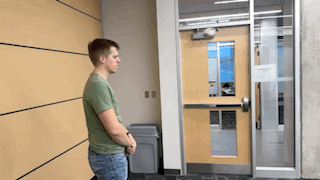How To Find Your Ideal Projectile
- Chealsie Bains

- Nov 8, 2023
- 2 min read
Selecting the proper projectile is the first step to constraining our otherwise open solution space. Some important parameters that we considered were:
Size - The ball must be large enough to provide a satisfying hit, but small enough that it can be launched in a launcher and stored in a reasonable way
Weight - A ball too heavy would potentially cause injury and use a higher motor torque to shoot; a ball too light would be prone to drag, and not have a smooth launching trajectory
Stiffness - The stiffer the ball, the harder the impact it would have when hitting a person. Therefore for safety reasons, we want to minimize stiffness
Durability - Since the ball is being launched at high speeds multiple times, it must have good durability to lower operation costs
Supply - We will need a large readily available supply of these balls for the demo.
Some Promising Candidates
After a few trips to our local Dollaramas, we procured a collection of some of the best balls the market has to offer.

1. Size
All of the balls were of similar sizes. They were all small enough to be launched and provided satisfying feedback when knocked out of the air. Ball 3 had an advantage, however, because it could be inflated/deflated to whatever size was most desirable.
2. Weight
Each of the balls was approximately the same weight. Some empirical tests were run to determine that air drag was negligible and that the ball didn't cause injury when tossed at around 10m/s.
3. Stiffness
Many empirical tests were run for this statistic. Ball 1 was made of dense foam, making it hurt more when hit in the face. Ball 2 was slightly better, but still made of foam, giving it a harder impact. Ball 3 and 4 had similar impacts, and hurt the least when taken straight to the face. They were therefore determined to be the safest projectile. Ball 3 could also be inflated to get the desired stiffness.

4. Durability
Ball 1 and 2 were determined to be less durable, because the foam material can easily be ripped apart after many cycles. Ball 4 was more durable because of its rubber material, however ball 3 was the most durable because of it's thicker shell and ability to re-inflate.
5. Supply
Balls 1, 2, and 4 were all procured from Dollarama, so getting a large supply would require us to visit many stores and purchase them over time. Each ball cost around $1.50, which would also eat up into the budget if we purchased ~100 of them. Ball 3 however, was supplied directly from activate, and we were shipped 100 samples. This made it the most readily available supply.
After comparing the metrics of each ball, ball 3 was chosen due to its readily available supply, modularity, and safety.

Parameterizing the selected ball
The next step was to parameterize this ball so that we could design our launcher system. The key parameter was the ball stiffness. To determine this, the ball was approximated to be a spring. Then a force gauge was used to measure the force at different compression lengths. These discrete data points were plotted, and a line of best fit was used to find the stiffness coefficient as seen below:

The coefficient was determined to be 694N/m.
Comments